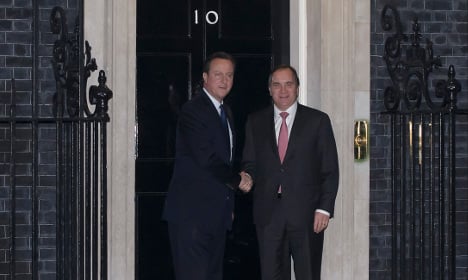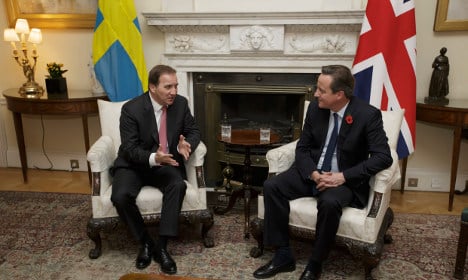The discussions came at a crucial time for both nations regarding foreign policy. Sweden is currently campaigning for other EU member states – including the UK – to take in a greater share of refugees fleeing violence in the Middle East and Africa. Meanwhile Britain is seeking support for its negotiation for treaty change with the European Union.
But Löfven, who heads up Sweden's ruling centre-left Social Democrat-Green coalition, suggested that right-wing Conservative leader Cameron should not count on the Nordic country's backing during a precarious time for the union as it continues to tackle the refugee crisis.
Speaking to international media after the meeting late on Monday – after his plane from Stockholm was delayed due to fog in London – the Swedish premier said he hoped the UK would remain within the EU, but advised against radical legislative action.
“I don't think anybody wants treaty change right now. (…) I see that as a very difficult issue and you have to find other technical solutions to handle those kinds of issues,” Löfven told Sky News.

David Cameron and Stefan Löfven outside 10 Downing Street. Photo: AP Photo/Tim Ireland
Last month the UK's Finance Minister George Osborne visited Stockholm as part of his efforts to drum up support for the idea that Britain should be allowed to renegotiate its relationship with the other 27 member states, before UK voters are given the chance to decide whether to remain 'in or out' of the European Union.
But Löfven was reluctant to offer Swedish support for the scheme on Monday.
“I cannot see a country that wants to go into a process of treaty change, not least because of the issue with the refugee crisis,” he told Sky News.
READ ALSO: 'Serious blow' to the EU if Britain leaves
Up to 190,000 people are expected to seek asylum in Sweden in 2015 and while Löfven has praised his country's response to the crisis he has warned that it is “approaching the limit” of its reception capacity.
The UK, on the other hand, has chosen to not be part of the EU's common asylum policies, with Cameron's government saying it would be able to accept 20,000 Syrians in the coming five years – the number of asylum applications Sweden receives in a month.
Swedish ministers have previously blasted EU member states for not doing enough to ease the burden on Sweden and other nations such as Germany taking in unprecedented numbers of refugees, but Löfven refrained from criticizing his host country on Monday.
“All EU countries must take their responsibility and we need a completely new redistribution system within the EU,” Swedish newspaper Dagens Nyheter quoted Löfven as saying after the meeting.
“[Cameron] said that the country does its part outside of the redistribution system and that they are accepting a few thousands. That's what the UK insists and continues to insist,” he said.
Stefan Löfven also met with the UK's opposition Labour party leader Jeremy Corbyn during his visit.



 Please whitelist us to continue reading.
Please whitelist us to continue reading.